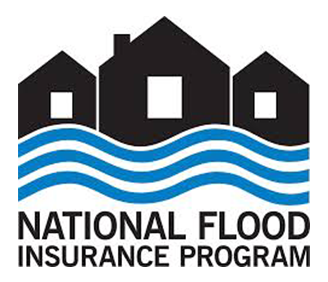NFIP – US Flood Insurance Is Underwater

The main problem with subsidized insurance stems from what is commonly termed a moral hazard in economics. Our desire to do the right thing, providing reasonably priced insurance, buying out vulnerable properties, and compensating for disasters, has actually encouraged more risky behavior and led to a bankrupt program. Roughly two thirds of the home flood insurance in America is covered by the NFIP.
So how did this all begin? Nearly a century ago there were several truly devastating floods, both from storms on the coast, and from inland rivers that overflowed their banks, destroying thousands of homes and taking many lives. Since floods are so costly, there was doubt about the solvency of private insurers. Understandably concerns in Congress were for the need to stabilize the market and establish policies to reduce exposure to loss in the future. Eventually that culminated in the National Flood Insurance Program, the “NFIP” in 1968, now part of FEMA.
Over the years, the mandate from Congress has evolved but essentially there are three elements that may seem compatible but are often in conflict:
- Provide affordable flood insurance to American homeowners
- Operate like insurance, with the program being self-sustaining financially over long periods of time
- Use the rules and rates to encourage better resiliency, reducing future loss and damage. E.g. improved building codes, zoning, and drainage.
When Congress gives more money to bail out the program, the cost is shared by all taxpayers. The operating losses are generally blamed on lenient rules that keep insuring and paying out claims on a relatively small number of highly vulnerable properties, something that would not be tolerated with commercial insurance underwriters. In every other field of insurance, the insurance industry has real exposure and therefore great incentive to balance risk and fees. With flooding, our “Uncle Sam” is left holding the bag, with the effect that most parties are motivated to get as much benefit as possible, with as little cost to themselves as possible.
In 2012, Congress tried to get the NFIP out of deficit by raising rates, but the political outcry quickly shredded that effort and overturned the revision of rates and rules. Voters pushed back on allowing any rollback on subsidies.
We have come to expect “reasonable” priced subsidized flood insurance for all properties regardless of their flooding vulnerability and risk. The present problems are the result of poor government policies that have now created an unsustainable expectation by the general public, especially as we live closer and more densely right on the floodplain.
Today, flood insurance is needed more than ever as evidenced by the damage from Hurricanes Harvey, Irma, and Maria. Beyond those big events, flooding is widespread from record rainfall, extreme high tides, and changing weather patterns with unusual and severe storms.
Sea-change is a term used to describe a fundamental change of the environment. The sea-change for flooding that we are now experiencing comes from three factors. First, there is more rain, directly coupled with increased evaporation from the warmer ocean. Second, more severe storms with strange patterns is a little more ambiguous, but worth serious concern as the ocean currents and jet stream change from the normalcy of the last century. Third, sea level is rising as warmer temperatures melt the glaciers and ice sheets. Together these three realities mean we are in a new era for flooding, quite unlike the recent past.
Even statistics and terminology can fail us in times of fundamental change. One only has to look at the frequency of “hundred year flood events” to know that something is amiss. Texas has had hundred year floods every year for the last three years. Louisiana too.
While there needs to be a vigorous policy debate on this with some real leadership and fiscal responsibility, I would venture to suggest that a sustainable path would lead us to consider three principles.
1. Turn flood insurance over to the private sector with competitive rates over a reasonable period of time, perhaps five to ten years, to allow transition and adaptation.
2. Have FEMA continue in the role of disaster relief, but with strong incentives to reduce repetitive claims.
3. Where it is prudent to get homeowners to relocate, offer financial incentives, but avoid accepting or implying that the government must take full responsibility for coastal flooding, which will continue to worsen with time. Even the current trend to have the government buy out homeowners at pre-flood value sets a bad precedent with millions of homes eventually in jeopardy. Governments can help, but I doubt that any government can afford to fully indemnify its citizens in the face of rising seas, record rain, and severe storms.
It may be personally or politically appealing to think that the United States of America can protect its citizens (voters) from the ravages of rising seas, record rain, and strange storms. In some ways this is a contest between the strength and capacity of the US government versus mother nature – the rising tide and the deluge rains. Politicians and bureaucrats might win a round in this fight but in the end nature will prevail.
It is a matter of when the sea-change is realized and how much money we want to spend in the process. The sooner we see where this is headed, the better. Otherwise, we will go broke in the process.
